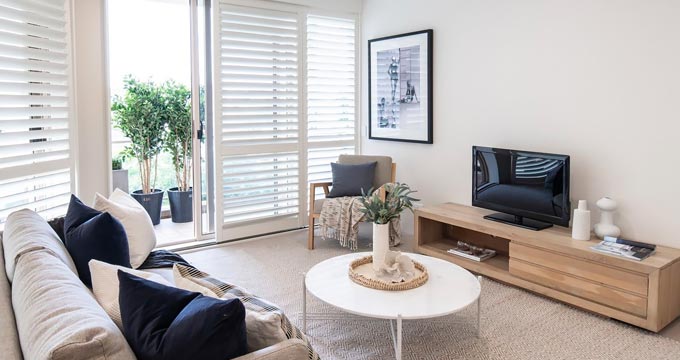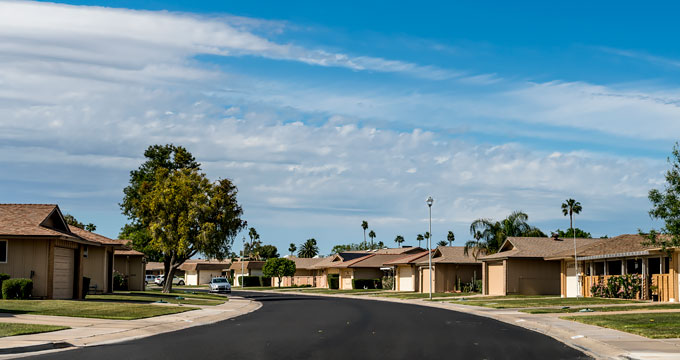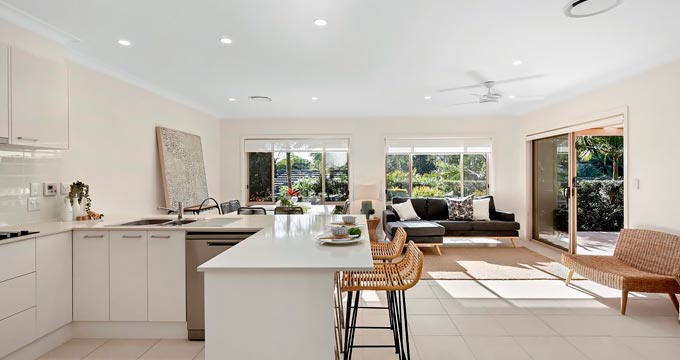
Low maintenance, single level homes that are easy to move around in are popular choices for retirement living. Source: Getty
Oct 28 2019
Renting vs ownership for retirement living
Getting older is a part of life and for most people, this process will include reconsidering living options.
For many, taking care of a large home simply doesn’t make sense if there’s just one or two living there, and selling a larger property to downsize can free up wealth previously trapped in assets.
Whether you want to downsize to your own home or are take the leap to retirement village living, there are plenty of options to choose from.
Downsizing to a smaller home, unit or apartment
Whether you’re planning on renting or buying, look for a home that will tick all the boxes for when you’re older.
Low maintenance, single level homes that are easy to move around in are popular choices for retirement living.
Apartments are also becoming a popular choice thanks to their low maintenance lifestyle, with many offering secure entrances with locations that are close to retail areas.
Just as with your current home you’ll be responsible for all maintenance if you purchase your property. Renting often doesn’t offer the security retirees crave with most lease contracts only lasting for 12 months.

Selling a larger property to downsize can free up wealth previously trapped in assets. Source: Getty
Retirement Villages
Retirement villages are a popular choice in retirement thanks to the many benefits they provide to residents.
Not only are residents more likely to live independently for longer thanks to additional services and care available, many now have facilities similar to luxury apartment complexes including pools and onsite restaurants – some regional retirement villages may also have a private golf course.
Owning or Renting in a Retirement Village
You can choose to own or rent in retirement villages. Most retirement villages will only have one option available, which will apply to the whole village, so if you’re set on a specific model your options might be slightly more limited.
Types of Retirement Village Contracts and Tenures
There are three main types of contracts and tenures in Australia, with a few other lesser used contracts. Here are the most common.

Many retirement villages now have facilities similar to luxury apartment complexes including pools and onsite restaurants. Source: Getty
Loan or Licence to Occupy
Loan or Licence to Occupy retirement village contracts are the most widely used in Australia. This type of contract is similar to renting except you pay a larger amount upfront, followed by smaller monthly fees, rather than a large rent payment each month.
Like renting, licence to occupy contracts usually have similar restrictions when it comes to modifications to the home or garden.
Because this type of contract is similar to renting, depending on your circumstances, you may also be entitled to Rent Assistance from the Australian Government.
Leasehold
If your retirement village has a leasehold then, under your contract, the operator owns the residences and you will be signing a long-term lease.
Often these leases will last for 99 years, however, in some cases, they can be shorter. If your lease is for 50 years or more you will be considered a registered interest holder, which gives you similar rights to owning your property.
These contracts are often “assignable,” which means you can sell the remainder of the lease to a new resident when you decide to leave.
Freehold Title or Strata Title
While not overly common, there are still plenty of freehold titles available. As the name suggests, you own the individual apartment or unit, and prices will fluctuate along with the real estate market.
The main difference is that you may have to be approved by the retirement village operator and you will also pay regular ongoing fees to contribute to the running costs.
Freehold titles allow you to sell at any time and take advantage of any capital gains made, however, check your contract as the village operator may also be entitled to a percentage of capital gains.

If your retirement village has a leasehold then, under your contract, the operator owns the residences and you will be signing a long-term lease. Source: Getty
Other types of contracts
There are two other types of retirement village contracts. although they aren’t commonly found in Australia.
Community Title Ownership is very similar to a freehold title or strata title, however, with a community title the boundaries are broken up into “lots,” which reference the size of the land, while the boundaries of strata titles are defined by parts of the building.
Another form of contract for retirement villages is a company share arrangement. In this type of contract, the operator retains ownership of the property and residents purchase shares in the company, which entitles them to live in the unit.





